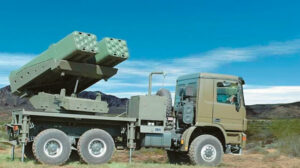Radiation detectors across northern Europe have picked up a short-lived, non-dangerous release of radioactivity experts believe came from Russia. Authorities believe the leak, which was first detected in early June, is coming from western Russia. One possibility is that the test is in some way related to a new nuclear-powered cruise missile, which caused an accident in 2019 and several deaths.
The Associated Press reports that officials in Finland, Norway, and Sweden detected man-made radionuclides—that is, radionuclides that do not naturally occur in nature. According to the Barents Observer, Iodine 131 was detected by air monitoring stations at Svanhovd and Viksjøfjell, Norway, as well as a nuclear weapons monitoring facility at Svalbard. Analysis by the Dutch National Institute for Public Health indicates the source of the radiation is western Russia.
Iodine 131 is a radioisotope created as a result of nuclear fission, which is why scientists believe the radiation release is the result of an accident at a nuclear facility. According to the CDC, exposure to large amounts of Iodine 131 can cause burns to the eyes and skin. Iodine 131 ingested into the human body accumulates in the thyroid gland, causing thyroid cancer. Iodine 131 has a half-life of eight days, meaning it can disappear from the environment relatively quickly.
Skopje demands Greece call them “Macedonia”
Read more: Popular Mechanics
Ask me anything
Explore related questions





